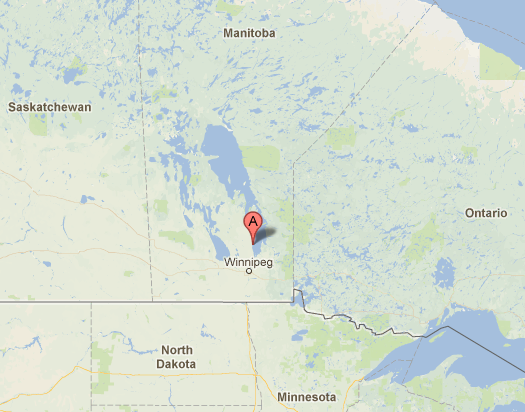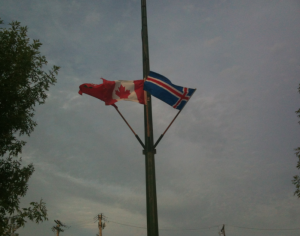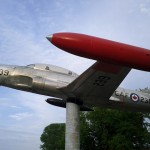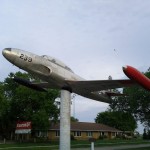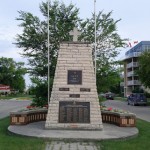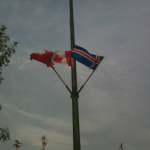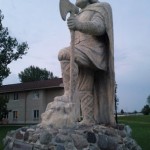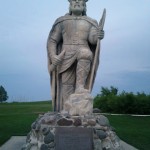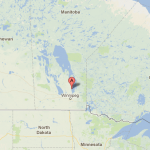Gimli, “Great Hall of Heaven”
Gimli is a a town in Manitoba, Canada situated on the west side of Lake Winnipeg, the 11th largest freshwater lake in the world. They have beaches there and no wonder the lake being so huge it felt like an ocean.
Gimli means “Great Hall of Heaven” in ancient Norse mythology and I visited the city last year (only for a few hours). I liked it a lot, perhaps I exaggerate a little (not a lot) but I would spend there 1 week instead of going to a Caribbean island.
The town of Gimli and the surrounding area is known as New Iceland, and is home to the largest concentration of people of Icelandic ancestry outside Iceland.
Also, there is a huge statue of a viking, height: 15 feet (4.6 meters)
And a mural about the ‘Gimli Glider’, the nickname of an Air Canada aircraft that was involved in a aviation incident in July 1983. On 23 July, Air Canada Flight 143, a Boeing 767-233 jet, ran out of fuel at an altitude of 41,000 feet (12,500 m) ASL, about halfway through its flight from Montreal to Edmonton via Ottawa. The crew was able to glide the aircraft safely to an emergency landing at Gimli Industrial Park Airport, a former Royal Canadian Air Force base.
 “At the time of the incident, Canada was converting to the metric system. As part of this process, the new 767s being acquired by Air Canada were the first to be calibrated for metric units (litres and kilograms) instead of customary units (gallons and pounds).
“At the time of the incident, Canada was converting to the metric system. As part of this process, the new 767s being acquired by Air Canada were the first to be calibrated for metric units (litres and kilograms) instead of customary units (gallons and pounds).
….
Instead of 22,300 kg of fuel, they had 22,300 pounds on board — a little over 10,000 kg, or less than half the amount required to reach their destination. Knowing the problems with the FQIS, Captain Pearson double-checked their calculations but was given the same incorrect conversion factor and inevitably came up with the same erroneous figures.
The Flight Management Computer (FMC) measures fuel consumption, allowing the crew to keep track of fuel burned as the flight progresses. It is normally updated automatically by the FQIS, but in the absence of this facility it can be updated manually. Believing he had 22,300 kg of fuel on board, this is the figure the captain entered.
Because the FMC would reset during the stopover in Ottawa, the captain had the fuel tanks measured again with the dripstick while there. In converting the quantity to kilograms, the same incorrect conversion factor was used, leading him to believe he now had 20,400 kg of fuel; in reality, he had less than half that amount.” From Wikipedia, the free encyclopedia
Twitter @curbexcitement
